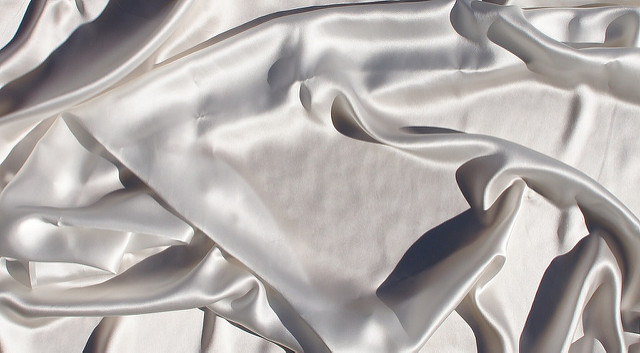Key Difference – Silk vs Wool
Silk and wool are fibers obtained from animal sources. While silk is made from the cocoons of silkworms, wool comes from the fur of animals like goats. The key difference between silk and wool is that wool is a better insulator of heat than silk, even though both can retain warmth.
What is Silk?
Silk is a natural fiber derived from animal sources, specifically the cocoons of silkworms. Several insects can produce silk, but only the silk from moth caterpillars is used for textile production. The most popular silk comes from the cocoons of the mulberry silkworm Bombyx mori. Fabrics such as chiffon, charmeuse, crepe de chine, taffeta, habutai, and tussah are often made from silk.
Silk fibers consist mainly of fibroin and are among the strongest natural fibers. However, they lose about 20% of their strength when wet and have moderate to poor elasticity, remaining stretched even under small force. Silk has a smooth, soft texture without being slippery like many artificial fibers. The shiny nature of silk results from the triangular prism-like structure of the silk fiber. Silk fabrics are lightweight but can keep wearers warm, although they may weaken if exposed to excessive sunlight.
Silk is frequently used for clothing such as formal dresses, shirts, blouses, ties, lining, pajamas, dress suits, lingerie, high-fashion garments, and traditional Eastern costumes. Its shine also makes it suitable for decorations and furniture, including wall coverings, beddings, and upholstery.
What is Wool?
Wool is a textile fiber obtained from furry animals like sheep, made from their fur. There are different types of wool, such as cashmere and mohair from goats and angora from rabbits.
Wool is used to make clothing, particularly winter attire, as well as blankets, rugs, carpets, saddle clothes, and upholstery. It is a good insulator of heat due to its natural air pockets that help retain body heat, keeping the wearer warm in winter. Wool fiber is durable, stretchable, soft, and water-absorbent. It doesn’t wrinkle easily and springs back to shape, but rubbing it produces static electricity. The quality of wool is determined by yield, fiber diameter, color, crimp, and staple strength, with fiber diameter being a significant factor in deciding wool’s quality and price.
What is the difference between Silk and Wool?
Origin:
– Silk: Produced from silkworm cocoons.
– Wool: Produced from animal fur.
Fabrics:
– Silk: Taffeta, chiffon, charmeuse, and crepe de chine are made from silk.
– Wool: Flannel, challis, jersey, etc., are made from wool.
Luster:
– Silk: Has a shiny, shimmery appearance.
– Wool: Doesn’t have a shine.
Insulating Properties:
– Silk: Not as good as wool at retaining warmth.
– Wool: Has good insulating properties.
Special Uses:
– Silk: Often used for formal dresses.
– Wool: Specially used for winter clothing.
